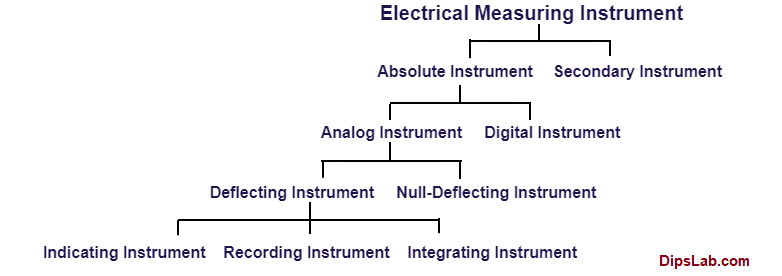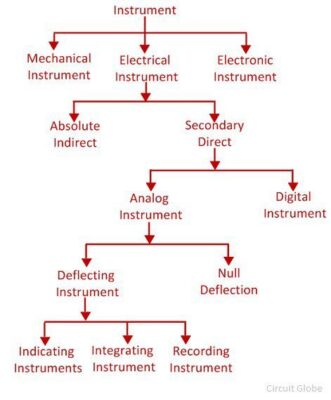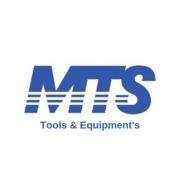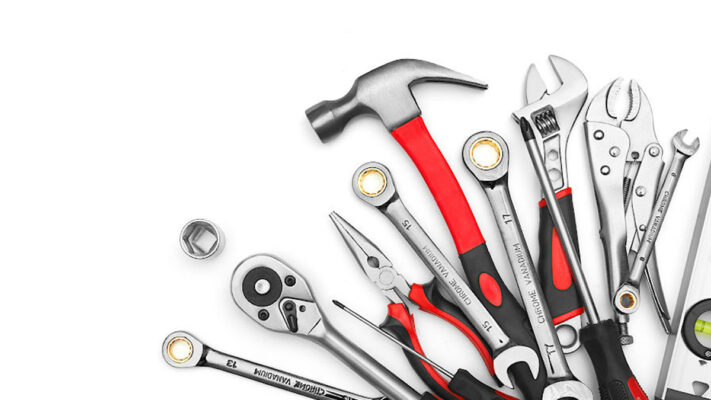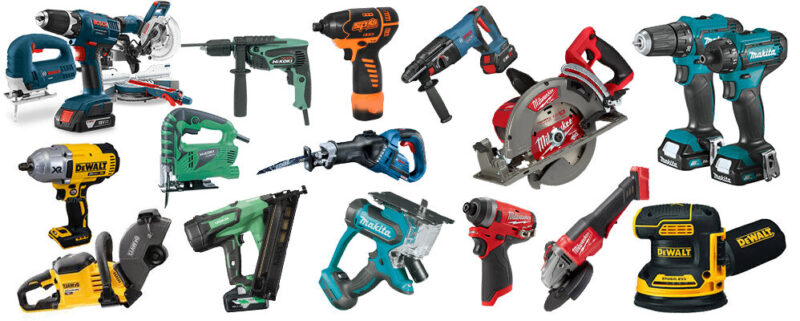Electrical Instruments
TYPES OF ELECTRICAL INSTRUMENTS
TYPES OF ELECTRICAL INSTRUMENTS
In this article, we will study ELECTRICAL INSTRUMENTS.
So starting from basics, the question arises what are electrical instruments?
Any instrument which is used to measure electrical quantities like current, voltage, electrical power, electrical energy, power factor, frequency etc. are called ELECTRICAL INSTRUMENTS.
Now we will move on to the classification of electrical instruments.
Like Electrical Instrument can be classified as
1. Absolute Instruments:–
These instruments, which gives the value of the quantity to be measured in terms of the constant of the instrument.
Example – tangent galvanometer, Raleigh’s Current Balance etc.
2. Secondary Instruments:-
These instruments gives the magnitude of the quantity directly by the deflection of pointer on the scale.
Examples – voltmeter, Ammeter etc.
Mostly, now Secondary Instruments are used.
Electrical Instruments are also classified as-
1. Analog Instruments:-
Such instruments have a calibrated scale and a pointer. The pointer moves on the scale and thus gives the reading of the quantity.
2. Digital Instruments:-
These instruments do not consist of scale or pointer, they directly give the reading in the digital form.
There is another most popular way of classifying the Electrical Instruments
1. Indicating Instruments:-
These instruments indicate the instantaneous value of the quantity under measurement.
Their indication is given by the pointers moving over calibrated scales.
Ordinary Ammeter and Voltmeter come in this category.
2. Recording Instruments:-
Those instruments give the continuous record or variation of the quantity under measurement over a period of time.
Such Instruments consist of the inked pen which moves on the chart or graph. The path traced by the pen represents the continuous record of the variation of quantity.
Eg:- ECG, a machine used by doctors to record heartbeat.
3. Integrating Instruments:-
These instruments neither provide instantaneous value nor they maintain a record of the quantity, but they integrate or sum up the quantity under measurement.
Examples of such instruments are the ampere-hour meter, energy meter, etc.
Energy Meter goes on to integrate the units being consumed and reads the total sum of the units consumed since the beginning.
